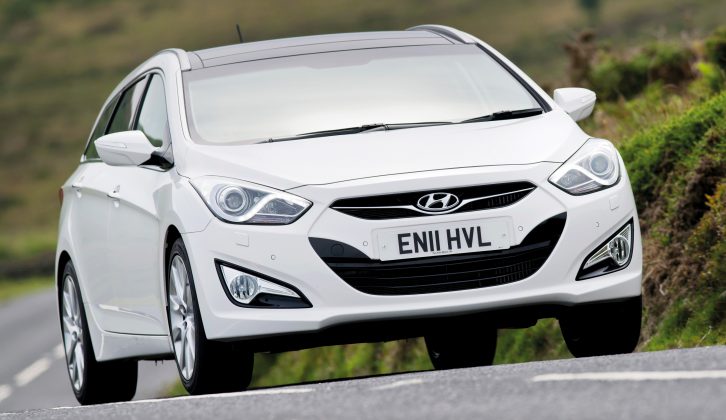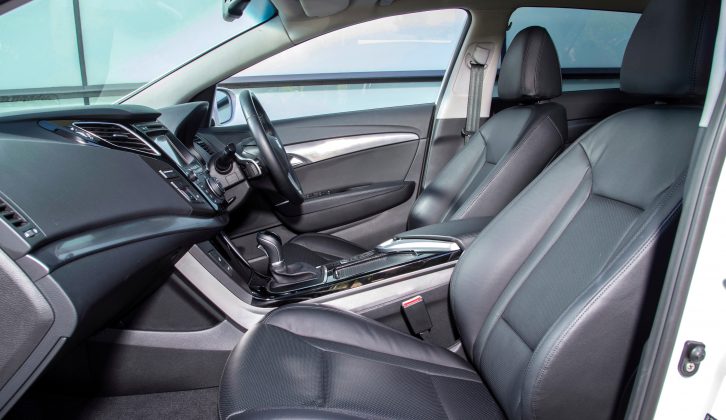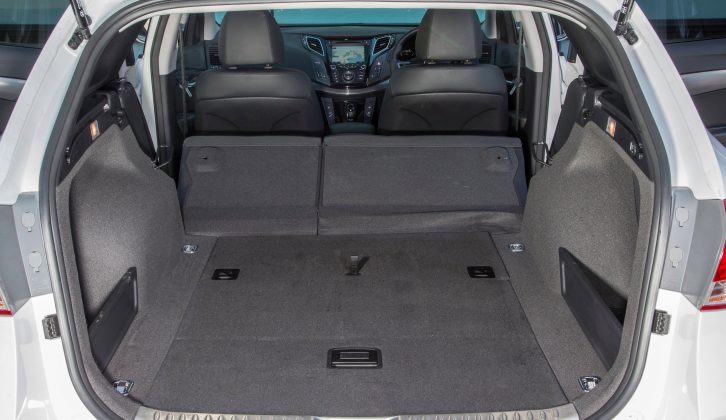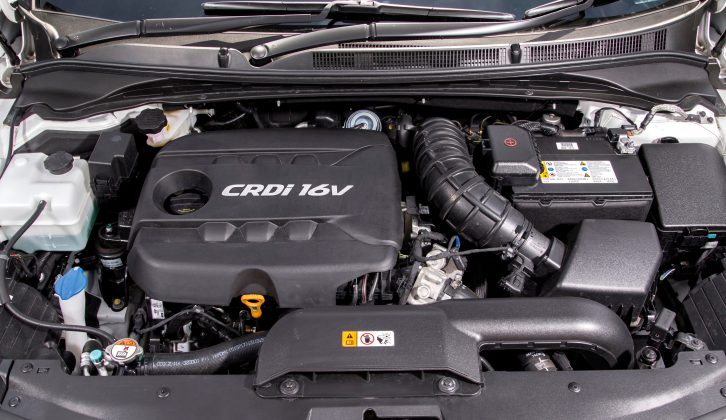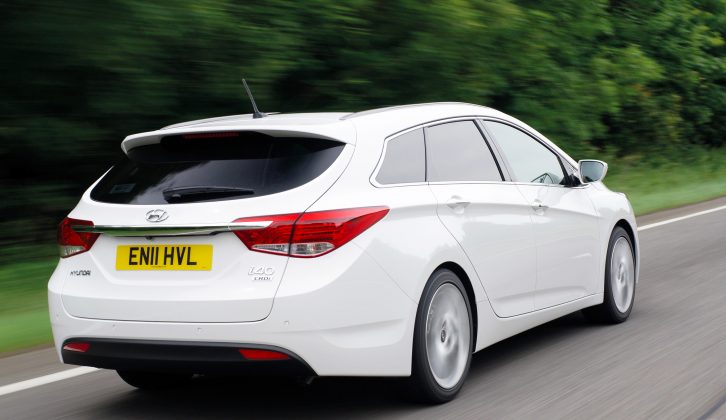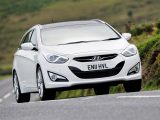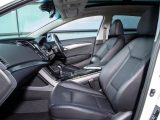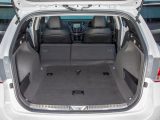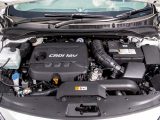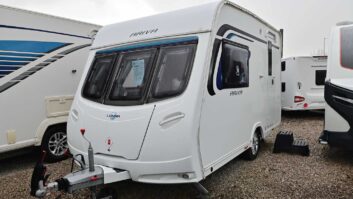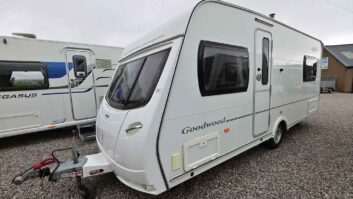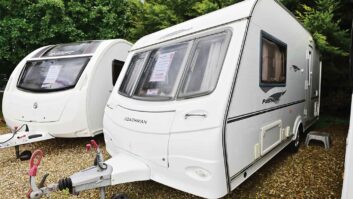The i40 is an example of Hyundai focusing on what it does best, because it’s a sensible, practical, well-equipped car that is cheap to run.
The Korean manufacturer proved it knew the car’s target market perfectly when it launched the Tourer (estate) version before the saloon back in 2012.
This was because it was always going to be snapped up by people who wanted a dependable workhorse with a bit of luxury thrown in – tow car owners, for example.
Meeting the brief
It was designed from the very outset with European buyers in mind, so was both penned and engineered at the company’s centre in Germany.
Under the bonnet was a range of engines that comprised a 1.6-litre and a 2.0-litre petrol, and a 1.7-litre turbodiesel that was available with two power outputs.
A six-speed manual gearbox was standard, while a six-speed automatic was an optional extra.
Hyundai also offered the diesels as super-efficient BlueDrive models, which featured an engine stop-start system and small-diameter low-rolling-resistance tyres to increase their economy figures and reduce their CO2 outputs.
Even better, the car was offered with Hyundai’s five-year warranty, so although early cars will be coming to the end of this cover, any later vehicles will be covered for some time yet.
Model history
Hyundai is known for having a much quicker turnaround of models than most of its rivals.
Its cars’ lifecycles tend to be around four years before they’re replaced.
Witness the i30 hatchback, which was launched a year after the i40 and which was replaced last year.
However, the i40 and i40 Tourer are soldiering on gamely, mainly because they’re still great vehicles in many respects.
A brave new world
When launched, the i40 represented a massive step forward for Hyundai on the family car sector.
Its previous offering was the Sonata, which was both uninspired and uninspiring. It was the wallpaper paste of cars – you got it to do a job and instantly forgot about it afterwards.
After such dullness, the i40 was so far ahead that it was over the horizon.
Even today, it looks great both outside and in. The swoopy, elongated appearance makes it look almost like a cut-price Mercedes-Benz CLS.
Well kitted out
Inside, the dashboard is slightly confusing at first glance, but there’s plenty of standard equipment in every Hyundai i40.
Even entry-level Active cars come with air-conditioning, automatic headlights and wipers, alloy wheels and Bluetooth mobile phone connectivity.
Step up to Style and you’ll get sat-nav, climate control, cruise control and a rear parking camera.
Top-spec Premium models get leather seats, keyless entry and a panoramic sunroof.
Which engine is best?
The two petrol engines are only for diehard fans of unleaded, and don’t have the mid-rev torque to cope with a heavy trailer – ones to avoid if you are wondering what tow car to buy next.
The diesel is by far the preferred option, especially in its higher-powered 134bhp guise – as long as you keep the revs above 1600rpm it generates plenty of muscle.
Over the years, power and efficiency have increased marginally. The gearbox is light and easy to use, and the engine stays pretty smooth and quiet. At speed, wind and road noise are minimal, too.
Stability is good, but if there’s a downside it’s that the steering is too light and short of feel, which can make towing tricky.
The Hyundai i40 Tourer’s boot is a great size, if a little narrow, while rear-seat space is fine for two adults, but a third would begin to complain in pretty short order.
Trouble spots
On the whole the i40 saloon and Tourer are pretty bulletproof.
They haven’t been subject to any recalls so far, so it looks like Hyundai got it right first time and has since wisely decided not to fix anything that isn’t broken.
Any complaints we’ve heard seem to concern individual cars rather than model-wide issues.
For example, we’ve heard of a couple of instances of the electromechanical parking brake proving reluctant to release in stop-start traffic – something that’s easy to check on the test drive.
There were clutch issues with a batch of cars built in 2014, but these should have been resolved by now.
However, as ever on the test drive, make sure the car changes up and down the gearbox smoothly.
The only other issue has concerned a vulnerability to stone chips on some cars, with subsequent rusting – give the car you’re looking at a thorough examination.
Verdict
A Hyundai i40 Tourer will make a pretty decent tow car, as long as you don’t expect too much from it.
It’ll tow a reasonably sized caravan with ease as long as you don’t ask it to hurry.
Not only that, but the i40 Tourer is a decent car to drive and live with when it isn’t attached to a trailer.
It’s well equipped and quiet, although the ride can be a little jiggly, especially at low speeds.
Finally, any car less than five years old will have some of the manufacturer’s original, unlimited-mile, warranty intact, so you get peace of mind, too.
Our pick of the range is the i40 Tourer 1.7 CRDi 136 Style, because it is the best of all worlds. The estate is large and flexible, while the engine is smooth, economical and easily capable of towing.
The model we’d avoid is the i40 saloon 1.6 GDi. The 134bhp petrol model will make heavy work of pulling even a medium-sized caravan, so will need to be revved hard, drinking a lot of fuel.
What you need to know
Interested in buying one? Well, to say the Hyundai i40 Tourer is a bit of a bargain is underselling it a touch.
Early 2012 cars can be bought for only £4500, although it’s also fair to say they’ll have been round the block a few times. Still, these cars tend to wear miles well, so this needn’t be a deal-breaker.
Up the budget to around £8000 and you’ll be looking at a 2013 car with a five-figure mileage, maybe a bit of its warranty left and quite likely a full Hyundai service history.
A £15k outlay will get you a 2016 car with a sub-10k mileage.
Here are some useful figures (for a Hyundai i40 Tourer 1.7 CRDi 136):
- Kerbweight 1648kg
- Towing limit 1800kg
- Noseweight limit 80kg
- 85% match 1460kg
If you are looking to fit a towbar, it will cost you £159.84 if it is a Witter flange towbar and £282.96 if it is a Witter detachable towbar, according to quotes provided by PF Jones (fitting is extra).
And what about servicing costs? An interim service is £176.14 and a full service costs £260.69 (quotes from Servicing Stop).
A sensible, practical, well-equipped car that is cheap to run
